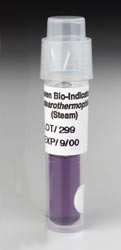

Conversely, stream samples below effluent discharge sites consistently contained 56–2,100 C. perfringens were consistently low in Hawaiian streams not receiving wastewater, whereas the concentrations of fecal coliforms and fecal streptococci were consistently high, which they attributed to non-point pollution due to animals and growth of these indicators in Hawaiian soils. They reported that the concentrations of C. perfringens is a better indicator to use in tropical waters. perfringens spores in the environment and their absence in streams with no human sewage led Fujioka & Shizumura (1985) to suggest that C. perfringens in some reasonable quantity of drinking water is considered to indicate the absence of recent or remote fecal contamination ( Cabelli 1977) and the absence of enteric viruses and bacterial pathogens in drinking water ( Bisson & Cabelli 1980). perfringens as an alternate indicator for the evaluation of wastewater, drinking water and environmental waters. Payment & Franco (1993) suggested using C. perfringens spores were the best indicators of fecal pollution and were the only indicators significantly correlated to any of the pathogen groups in the water column. (1996), in their study of relationships between indicators and pathogens in an estuarine system, reported that C. perfringens spores survived longer than other fecal indicator bacteria (FIB) in marine systems and were higher in number than other FIB in sediments and at greater distances from the discharge sites. perfringens in water environments in the absence of other indicators, such as Escherichia coli, is a useful indication of remote fecal contamination, a potential conservative tracer in field studies and a conservative tracer in pathogen die-off studies ( Cabelli 1977). The exceptional longevity of spores implies that C. PERFRINGENS SPORES AS CONSERVATIVE INDICATORS OF FECAL CONTAMINATION This review focuses primarily on comparing the various methods used to detect and enumerate bacterial spores to help laboratory personnel choose which method is most appropriate for their studies.

Although rapid molecular methods are now available, cultural methods for measuring indicator organisms are still preferred in routine monitoring because of their relatively low costs.

Clostridium perfringens spores have been proposed as indicators of fecal pollution because they are entirely of fecal origin, widely distributed in sewage and consistently associated with human feces ( Bonde 1963 Bisson & Cabelli 1980). (2001) and Yates (2007) are: (i) occurs where pathogens do, (ii) cannot grow in the environment, (iii) more resistant to disinfectants than are pathogens, (iv) easy to isolate and count, (v) only found in sewage, (vi) found in higher numbers than pathogens, (vii) correlated with health risks and (viii) densities of indicators should relate to degree of contamination. Basic historical characteristics of the ideal water quality indicator described by Griffin et al. Since pathogens of fecal origin are numerous and the occurrence of any particular pathogen is random over time and space, water quality is normally assessed by way of indicators of fecal contamination. Aerobic spores are not associated with fecal contamination but they can be surrogates for environmentally stable pathogens in monitoring water for treatment efficacy Bacillus cereus spores are normally measured on nutrient agar by the MF method. Two newer methods have substantial potential, CP Chromo Select agar, which allows better recoveries and greater specificity than mCP, and the Fung double tube method, which creates anaerobic conditions and allows enumeration of colonies in tubes in 5–6 hours. TSC produces fewer false-positive results than mCP however, it does produce more false-negatives. TSC normally allows higher recoveries than mCP. The most commonly used MF media are TSC medium and mCP medium. Membrane filter (MF) methods are preferred over the more laborious and less accurate most probable number methods. Cultural methods are still preferred over qPCR for routine water quality monitoring because of their low costs. This review discusses the reasons and summarizes methods for monitoring spores in water. Because Clostridium perfringens spores are both specific to sewage contamination and environmentally stable, they are considered as possible conservative indicators of human fecal contamination and possible surrogates for environmentally stable pathogens.


 0 kommentar(er)
0 kommentar(er)
